Normandy and Brittany are perfect for a road trip: their fascinating, dramatic coastlines, cute medieval towns, fresh seafood and rich history offer something for everyone. Visit the magical Mont St. Michel, taste fresh oysters and scallops all along the coast, have a cozy dinner at one of seafront restaurants, drink some local apple cider and Calvados and sleep in castles along the way. We have selected 10 best places to visit – put them into an itinerary in your own order, depending on your starting point.

Mont Saint-Michel stands isolated in its bay, shrouded in history of centuries. Some say that it’s as close to heaven as anyone could be. Its bastions rise up the granite ridge, reaching up to the abbey and Romanesque church on top. Built by monks, Mont Saint Michel has received many pilgrims over centuries. After the French Revolution, it was converted into a jail. It is now maintained by Fraternity of Jerusalem monks and nuns, and welcomes with friendly restaurants, bars and hotels. Make sure to go during the week, as it gets especially crowded on weekends, and it might be even hard to find a parking spot. Local shuttles carry visitors from parking to the mountain.

Locronan, a typical village, offers a real taste of old Brittany. It’s also officially one of the most beautiful villages in France. Locronan was once a sacred place for the Celts, with history that goes back for more than 2,000 years. During the middle ages, Locronan was manufacturing local hemp and other products. The village is built in traditional local granite and is very well preserved, so you will be stepping into a fairy tale. The cobbled streets are great for walking as traffic is off-limits.

Whether you are into history or not, visiting the famous Normandy battle beaches of World War II is a must. The D-Day Landings were the most vital part of the greater Operation Overlord to liberate Western Europe from Nazi occupation – and the largest seaborne invasion in history. Early on the morning of 6 June 1944, swarms of landing craft hit the beaches of northern Normandy and thousands of Allied soldiers began storming into France. The majority of the 135,000 Allied troops poured into France along 80km of beaches in Normandy, now called Utah, Omaha, Gold, Juno and Sword. We enjoyed staying in Arromanches, in the midst of the D-Day beaches. Troops did not land at Arromanches on D-Day, because the town’s beach served as a portable harbour (known as Port Winston after commander Winston Churchill), which lasted for five months. It allowed to transport 2.5 million men, 500,000 vehicles and 4 million tones of supplies. Arromanches offers a beautiful historical beach with the remains of Port Winston, cliff walks, D-Day museum and excellent waterfront seafood restaurants.
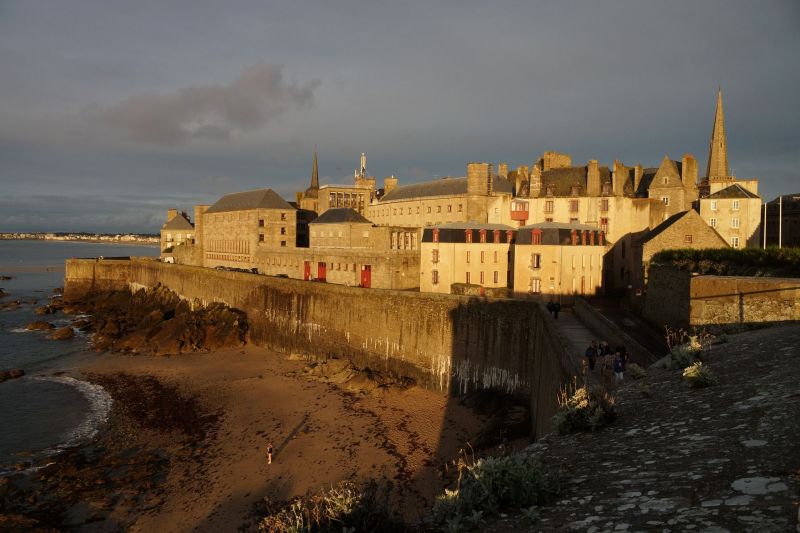
The walled city of St Malo was founded by the Welsh monk St Maclou, who built a church on the site of the Roman city of Aletis. It is now a ferry port that enchants with its cobbled streets, nice hotels and restaurants – anything from simple mouleries (mussel houses) to more sophisticated French eateries and bars. St Malo also has a golden sand beach – so go through the medieval gates and you will find yourself on the beach with shallow waters. Back in the day, St Malo was known as a breeding ground for privateers and pirates. Enjoy the relics of the past, such as views from the citadel and the 14th-century Tour Solidor.

Twenty minutes east of St-Malo, the port of Cancale is famous for its oysters. The town has a long tradition of cultivating oysters on terraces that live with the rhythms of tide. Tides in Cancale are very strong, leaving fishing boats stranded on the seabed. Grab a table at one of seafood restaurants and enjoy the freshest, award-winning oysters. If you are up for a hike, head right to the Pointe du Grouin for some breathtaking views.

Also close to St-Malo (about 20 miles), you will find the fortress town of Dinan that rises high above the river Rance. It has pretty cobbled streets and squares, complete with half-timbered houses, where you will find traditional restaurants, crêperies and bars. The town’s steep street, Rue du Petit-Fort, leads to the riverfront and has multiple galleries and restaurants.
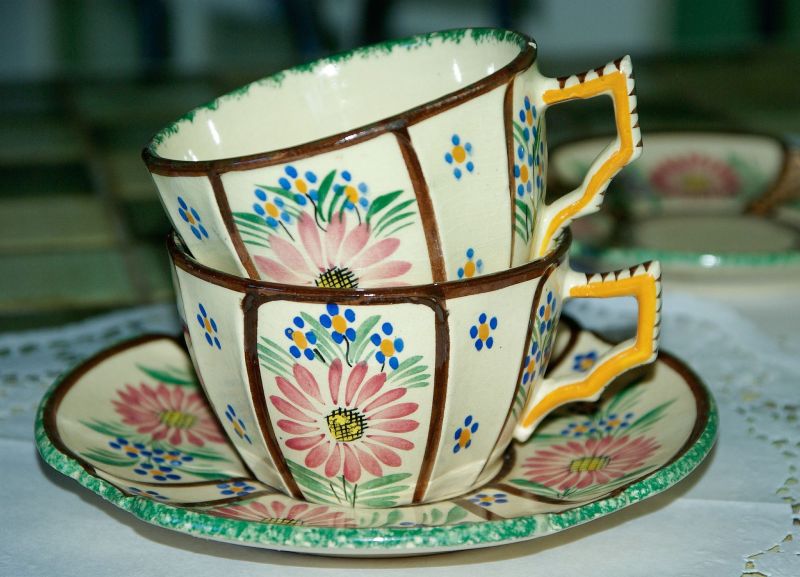
Quimper is Brittany’s oldest city, which started as the capital of the mythical kingdom of Cornouaille. Visit its impressive Gothic cathedral, stroll by the river Odet, have a meal and pop into the local shops. You might especially like Quimper’s traditional hand-painted faience pottery. For one week in July the town comes alive for the Festival de Cornouaille, which is a celebration of Breton music and traditions.
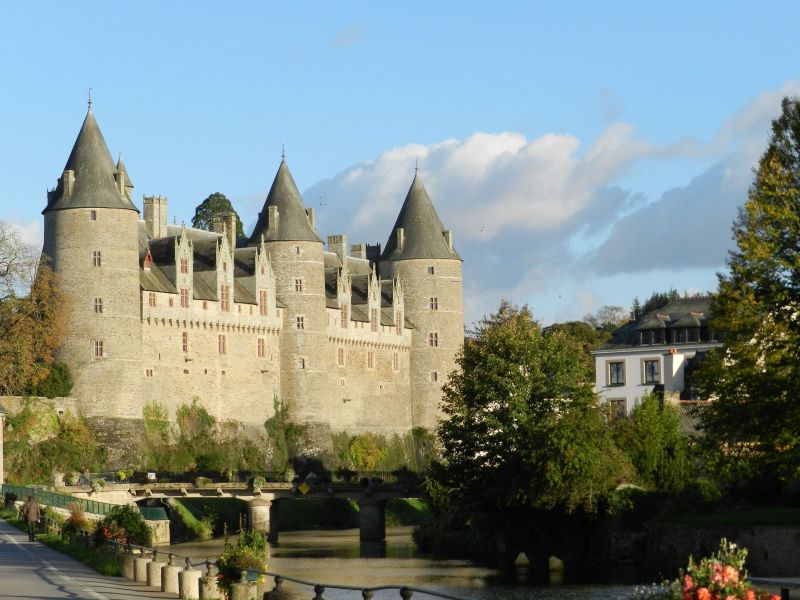
Built in the early 11th century on the banks of the Oust, Josselin Castle enchants with its towers and gothic-style façade. It’s a perfect example of feudal and Renaissance architecture. The castle’s gardens were meticulously landscaped by landscape gardener Achille Duchêne in 1910. You can stroll in the gardens and see roses and rare species of azaleas and rhododendrons. Since its founding in 1008, the castle remains the property of Rohan family, which still lives here today. You can visit the castle on a tour, just check for the group tour times beforehand. The former stables host Musée de Poupées (doll museum).
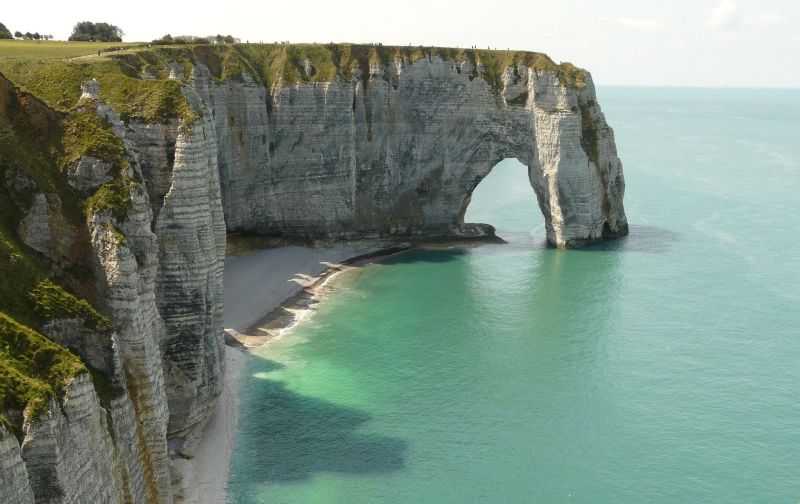
Étretat is a must-visit on any Brittany-Normandy tour. The village offers dramatic coastal scenery, which was adored by such painters as Camille Corot, Eugène Boudin, Gustave Courbet and Claude Monet. Now, it’s a fashionable sea escape for Parisians, who have built beautiful villas at the end of the 19th century, and still keep coming for some weekend beach time. The pebbled beach is surrounded by dramatic cliffs that have eroded into giant formations and offshore needles.
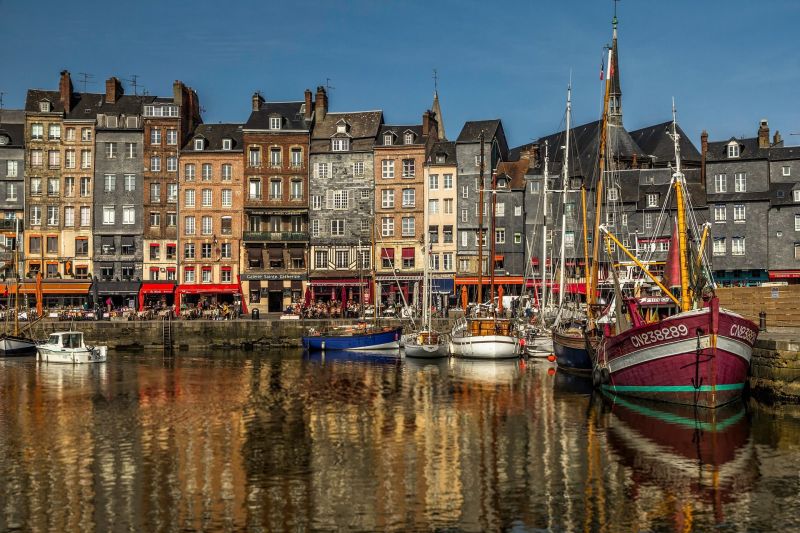
Not far from Étretat, Honfleur’s another beautiful seaside town. Its ‘Vieux Bassin’ (old dock) dates back to the 17th century. While it used to be a fishing port, now the dock is filled with yachts. Honfleur’s narrow, tall buildings have traditional timber frames and slate roofs. Most of them house restaurants and cafes during the high summer season, offering deliscious fresh seafood and outdoor dining.










